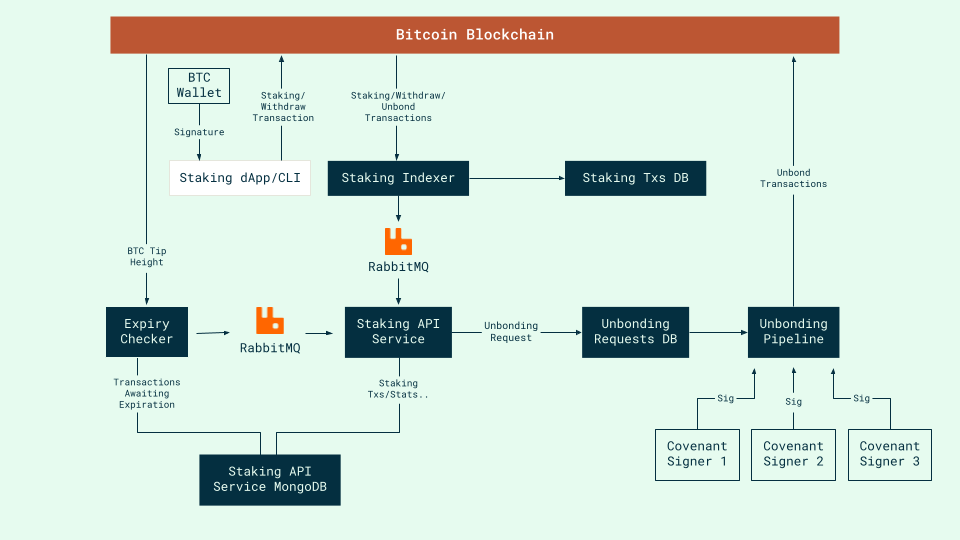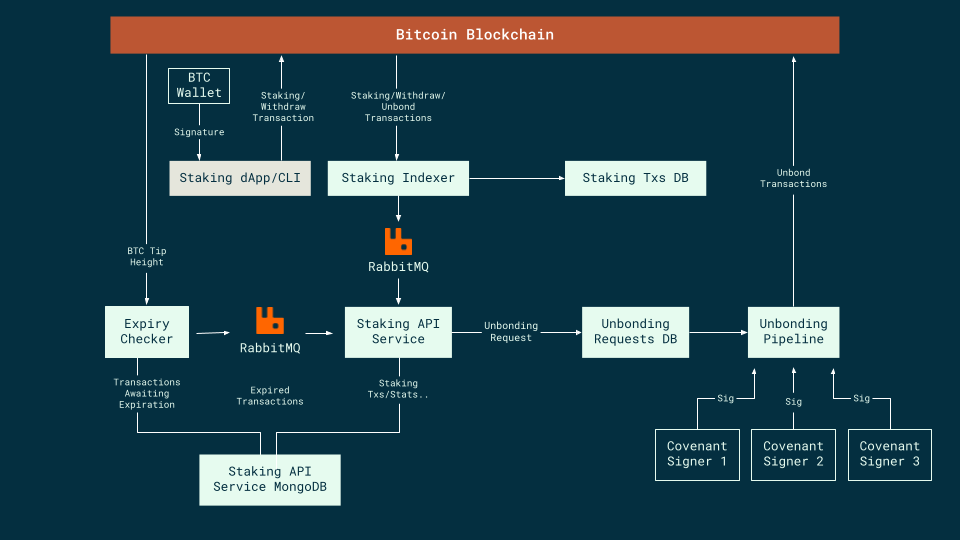Bitcoin Staking Backend System
The Bitcoin Staking Backend is a robust system designed to facilitate Bitcoin staking operations on the Babylon network. It comprises specialized services that extract, validate, and transform blockchain data from both the Bitcoin and Babylon chains. These services provide performant, API-friendly interfaces for decentralized applications (dApps), manage staking lifecycle states, and ensure secure and efficient handling of staking transactions such as withdrawal processes.


Deployment Overview
This guide outlines the deployment process for the Phase-2 Bitcoin Staking Backend system. Follow the steps in sequence for successful installation or upgrade from the corresponding Phase-1 system.
Prerequisites
Before deploying the staking services, ensure the following components are properly set up:
-
Bitcoin Full Node - Setup Guide
Powers transaction verification on the Bitcoin network -
Babylon Node - Setup Guide
Connects to the Babylon blockchain for monitoring staking events -
MongoDB Clusters - Setup Guide
Stores all staking data and transaction history -
RabbitMQ - Setup Guide
Handles message queuing between system components -
Global Configuration - Setup guide will be available soon.
Defines system-wide parameters for all services
Migrating from phase-1 stack
The migration from phase-1 to phase-2 involves several critical steps to ensure a smooth transition while maintaining service availability. Here's the detailed migration process:
-
Shut down phase-1 services:
- Stop the phase-1 indexer service with
systemctl stop $SERVICE_NAME. This allows the service to finish current tasks and shut down gracefully.
- Stop the phase-1 indexer service with
-
Database preparation (Optional):
- Create a complete backup of your MongoDB databases
- Verify backup integrity before proceeding
-
Deploy phase-2 services:
- Continue with the steps outlined in the "Launching Services" section below
- The phase-2 API service is fully backward compatible, ensuring users won't notice any service disruption
Important notes:
- The phase-2 indexer can be deployed earlier (even while legacy services are running) to give it time to synchronize with the Babylon network
Launching Services
Once all prerequisites are checked off, deploy these services in the following order:
1. Deploy Staking Indexer
- Staking Indexer Setup Guide
- This service monitors both blockchains and processes all staking events
2. Deploy Staking Expiry Checker
- Staking Expiry Checker Setup Guide
- Manages expired delegations and state transitions
3. Deploy Staking API Service
- Staking API Service Setup Guide
- Provides the API endpoints for all staking operations
- ✓ Test the API endpoints after deployment
Verification
After completing all steps, verify your deployment by:
- Checking service logs for any errors
- Using the
/healthcheckendpoint to verify API service health